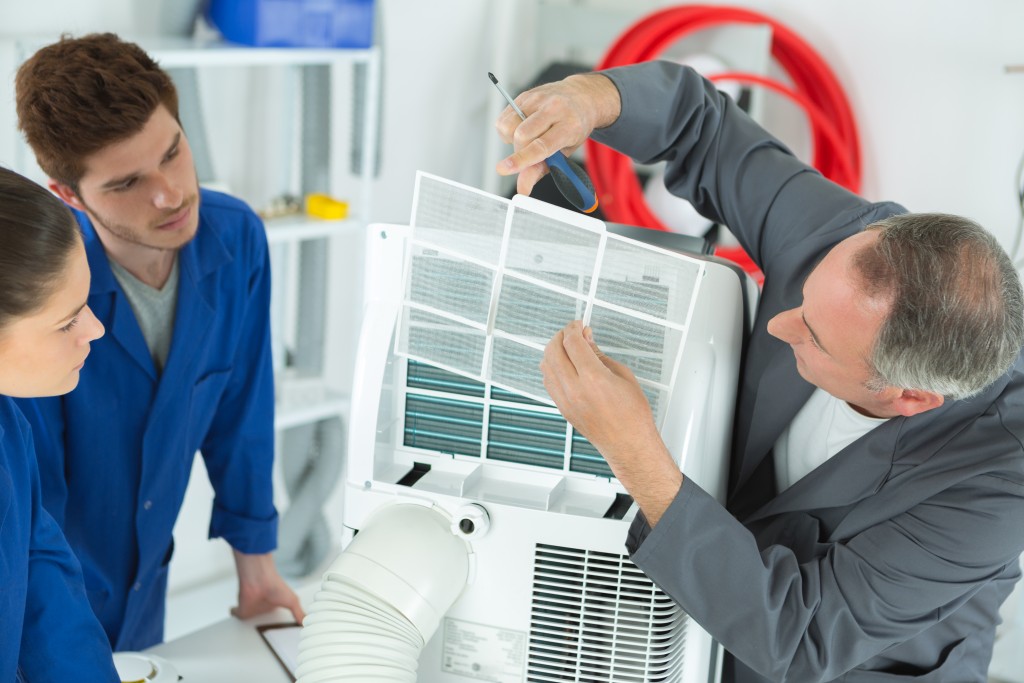A lot of homeowners obsess about tidying up and making their homes look as best as they can be. However, you should also prioritize your home’s indoor air quality. The Environmental Protection Agency (EPA) states that indoor air could actually be dirtier than outside air.
Polluted indoor air could result in respiratory problems, headaches, and other health issues. In this light, below are common indoor air quality problems and how you can combat them.
Common Issues With Indoor Air Quality
Germs
If you are not vigilant, filthy ductwork could circulate bacteria and viruses around your house, with the most common being flu and cold viruses.
Airborne Chemicals
Not all pollutants come from outside your home. Seemingly innocent household products like paint, cleaners, varnishes, and textiles could emit VOCs or volatile organic compounds, which are all classified as airborne chemicals. These could irritate the throat, nose, and eyes and result in breathing issues as well as nausea and headaches.
Allergens
While pets and plants are great and all, their dander and pollen, respectively, could be major irritants. Trying to handle all these pollutants in your home by simply opening a window won’t suffice. Allergens can easily travel from one part of the house to another, particularly if they are attached to your pets or you. Mold and dust mites are also very common indoor allergens. You could install an air purifier in areas such as bedrooms to lessen the spread of these allergens.
Toxic Odors
Whether from a baking experiment gone awry or from outside, certain odors are just unpleasant. Some could even indicate something more serious like mold or smoke particles. Air fresheners, unfortunately, add to the problem.
Humidity Imbalance
Too much humidity promotes mildew and mold development, while too little of it could dry out the sinuses, hair, and skin. Mold could also irritate the throat, lungs, nose, and eyes even in people who aren’t allergic or sensitive to it.
How to Keep Your Indoor Air Quality Clean

Keep Everything Spick and Span
Aim to vacuum at least once or twice weekly to keep indoor air pollutants at bay. Make sure your vacuum has a HEPA filter. Also, buy allergen-resistant coverings for all your pillows and mattresses and clean your pet’s most used toys and furniture frequently.
Invest in Whole-Home Air Purification System
This will help fight all threats to your indoor air quality. Installation takes just an hour and is connected to the HVAC system. If possible, opt for photocatalytic oxidation system with a MERV 16-rated carbon filter.
This provides hospital-grade filtration and is capable of eliminating up to 50% of household odors and chemical vapors, 90% of bacteria and germs, as well as 99% of common pollutant particulates. Make sure to get a system that does not release ozone, which is another common indoor air quality irritant.
Use a Dehumidifier to Combat Humidity Imbalance
If you experience common signs of excess humidity in your home, consider adding a whole-home humidifier. You should also keep the humidity level in your home between 40% and 50% to ensure comfort.
Go Au Naturel
Choose zero-VOC paints, organic and natural materials, as well as vintage pieces that don’t emit toxic gases anymore to decrease chemical vapors inside your house.
Air It All Out
Ventilate your house whenever the outdoor air quality is safe, particularly during activities that produce high levels of indoor air pollutants like sanding or painting.
Use a Wi-Fi Thermostat
Opt for a smart thermostat capable of monitoring the air purification filters and humidity levels in your home. This will help make certain that the humidity levels are on point and that you change your air filters at the right time.
With this battle plan, you can keep your indoor air quality fresh and clean for you and your loved ones.

